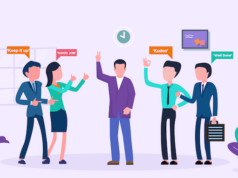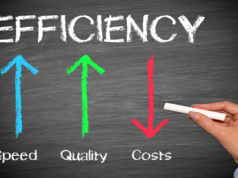In an age where technology redefines the boundaries of industries, the field of translation has not been left untouched. Particularly in the realm of USCIS-certified translation services, the incorporation of advanced technologies like artificial intelligence (AI) and machine learning has revolutionized how documents are processed. In immigration documents, where the most minor errors have significant consequences, accuracy, precision, and correctness are very important. But let’s talk about the implications of technology in this area and how it impacts it.: what are the benefits, and what are the disadvantages? Is technology the change that we were expecting?
The Integration of Technology in Translation
The evolution of translation services has been remarkable. From the days of purely manual translation to the current era of digital tools, the landscape has changed dramatically. For USCIS documents, this change is not just about convenience but necessity. USCIS-certified translations are specialized services that provide translations meeting the requirements set by the United States Citizenship and Immigration Services (USCIS). These services are essential for individuals applying for visas, green cards, naturalization, and other immigration benefits in the U.S.
That’s why accuracy is so important, and blending AI and machine learning with human supervision seems to be the best choice when providing such services. These technologies are not just supplementary tools but central features that enhance the translation process. They offer the promise of faster turnaround times and improved accuracy, essential for documents that need to adhere to the USCIS’s strict standards.
The Influence of Artificial Intelligence
AI has transformed numerous industries and translation is no exception. In the context of USCIS document translation, AI-driven tools, particularly neural machine translation (NMT), have become invaluable. NMT works by simulating the human brain, but with a huge capacity to work on large amounts of text and find very fast correct terms in dictionaries.
The benefits of USCIS-certified translation services are manifold. Repetitive tasks are its specialty, freeing humans to focus on the most complex and relevant tasks. This way, a lot of time isn’t wasted anymore. AI can also access databases and correct human mistakes easily and rigorously
thus enhancing the quality of translations over time.
Machine Learning’s Contribution

Machine learning, a subset of AI, is particularly adept at improving itself through data analysis. The way machine learning works is by identifying patterns and simulating human behavior. The thing is does better is that it can access the very correct words so that it can work without errors. Another job it can perform, at best, is to correct human translations for small errors like typos or even suggest better words. This capability is crucial when translating the legalese and technical jargon typical in USCIS-certified translation services.
Moreover, machine learning is increasingly adept at adapting to the specific context of a document, ensuring that translations are not only grammatically correct but also contextually appropriate. And this is very important when working in particular with legal documents that need translations, where a small word can impact the document’s effectiveness.
Addressing the Challenges
Despite its benefits, the use of technology in translation isn’t without challenges. AI and machine learning are only as good as the data they are trained on, which means they can sometimes struggle with languages or dialects that are underrepresented in training data sets. Moreover, the subtleties of cultural nuance and idiomatic expressions are areas where human translators still excel.
Recognizing these limitations, the role of human oversight cannot be understated. Experienced translators bring an understanding of cultural context and the ability to interpret meaning beyond words—skills that are currently beyond the reach of even the most sophisticated AI.
The Ongoing Need for Human Expertise
Despite the strides made in technology, the need for human expertise remains prominent. Machines, although increasingly sophisticated, still lack the ability to fully grasp context and cultural subtleties in the way humans can.
Real-Time Translation Enhancements
Real-time translation technology, powered by advanced AI, is beginning to make its mark in the industry. This technology offers the potential for instantaneous translations, which could be particularly useful in legal and immigration contexts where quick decision-making is often required. While still in the developmental stages of the accuracy of USCIS-certified translation services, real-time systems show promise for routine inquiries and initial document assessments, providing a faster service for preliminary evaluations.
Adaptive AI Learning from Human Input
Adaptive AI represents a leap forward in making machine learning more effective for specialized translations. By learning directly from the corrections and inputs of human translators, these systems are designed to understand the subtleties of language and context that are typical in USCIS documents. This technology not only improves with each use but also adapts to the specific styles and nuances preferred by individual translators or translation companies.
Critical Human Oversight
Human oversight is necessary to ensure the highest quality in USCIS-certified translation services. Professional translators are the ones who use the raw material provided by AI and transform it into the text that needs to be. Reviewing the text, certifying its accuracy, and correcting by adjusting words culturally and contextually are among their most powerful skills that cannot be replaced yet by a machine. This process ensures that the final draft is precise and culturally sensitive.
Training and Development for Translators

Being a good professional takes time and requires investing a lot of time. It is equally important to stay updated with societal changes and technological advancements. A good translator needs to undergo training and continuous learning throughout his professional life. Being aware of cultural norms and changes is also important to avoid supervising offensive or meaningless texts.
Understanding how to effectively use new translation tools and technologies becomes part of their skill set. Moreover, as machine translation becomes more prevalent, the focus for human translators may shift more towards editing, proofreading, and quality assurance—skills that will likely increase in demand as the technology evolves.
Conclusion: A Synergistic Future
At first sight, I may be inclined to think that translations are only human work. But with the rise of new technology, AI is also very useful in this process and can be of great help concerning repetitive tasks or even correcting words. It learns everyday new patterns and can also suggest rephrasing or synonyms. That’s why a good translator must be updated with all the powerful tools he can use and also about cultural changes in society to be able to create meaningful texts.


















